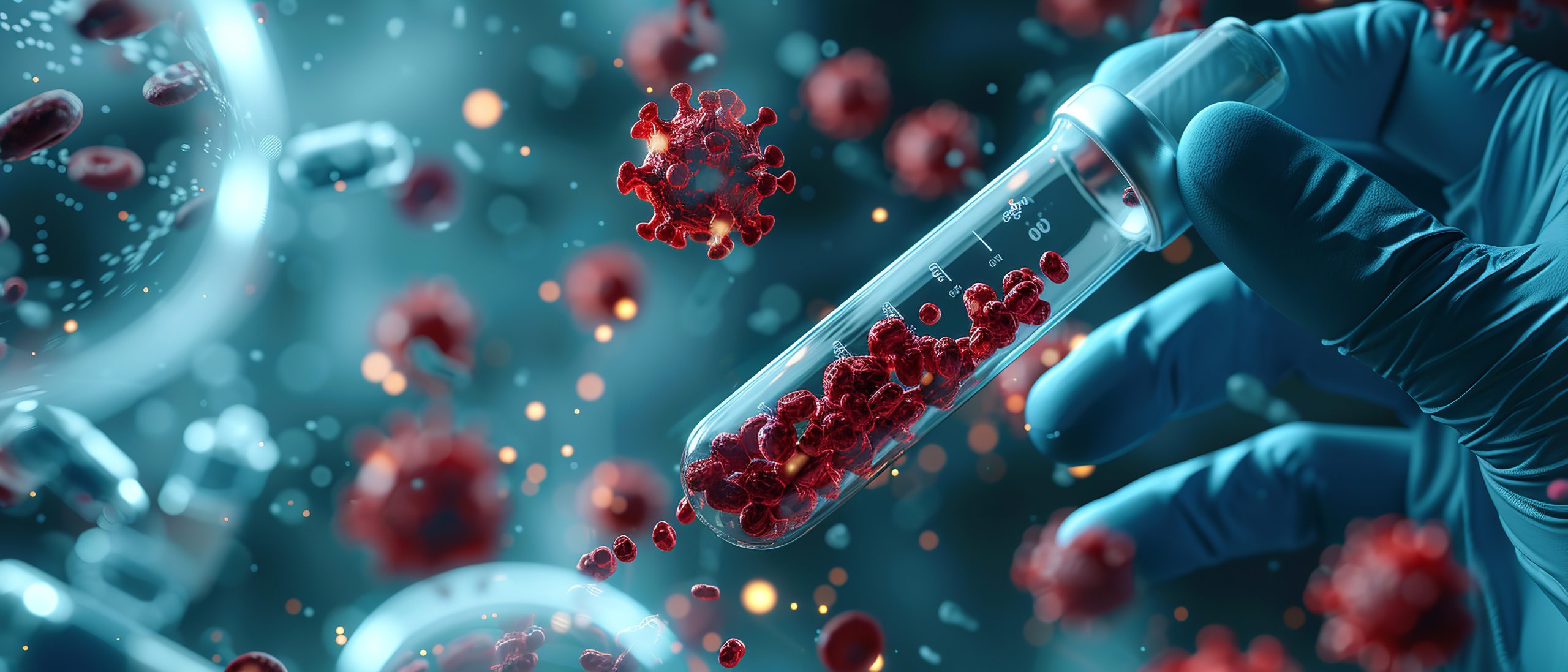
How To Seek The Right Compensation for Mesothelioma
According to the Mesothelioma Center, around 3,000 new mesothelioma cases are diagnosed in the U.S. each year, affecting about 1 in 100,000 people.
Receiving a mesothelioma diagnosis can be stressful. Consulting a skilled mesothelioma lawyer is advised to learn more about your legal rights and options.
A mesothelioma lawyer in Louisiana states that these legal professionals help a victim in making all forms of claims against either a personal injury lawsuit or an asbestos trust fund.
Learn more about mesothelioma and how you can seek appropriate compensation.
Understand Mesothelioma and Its Causes
Individuals suffering from mesothelioma should understand its causes and risks. Asbestos, a natural material commonly used in construction and industry, causes mesothelioma. People who work in the construction, shipbuilding, and insulation industry are at risk of developing mesothelioma.
When asbestos is inhaled into the lining of the lungs or abdomen, it causes inflammation and damage to some cells. There are different types of mesothelioma. The most common of these is pleural mesothelioma, which affects the lungs.
Diagnosing mesothelioma is difficult since it can take decades for symptoms to appear. Symptoms of mesothelioma include difficulty breathing, pain in the chest, and a persistent cough. These symptoms can pass for other medical conditions, which makes mesothelioma diagnosis challenging.
Identify Your Legal Rights
You have the legal right to hold those responsible for asbestos exposure accountable. Knowing your rights will help you secure compensation for medical bills, lost wages, and emotional distress.
You need to study your local state laws and understand statutes of limitations. This law sets a time period for filing claims. If you do not file your claim within the legally prescribed time frame, it will be denied.
Identify the responsible parties, including employers, manufacturers, or property owners who exposed you to asbestos. Attorney M. Reid Acree, Jr., says consulting mesothelioma lawyers help understand how much the disease really costs. They will provide information on how much is adequately needed to cover medical bills, lost wages, pain and suffering, and future costs. Having a legal professional by your side will guarantee that you secure the appropriate amount to cover all of your losses
Explore Compensation Options
People have several options when it comes to seeking compensation for mesothelioma. The first option is personal injury litigation and the other is a wrongful death action. These lawsuits seek to recover your losses caused by mesothelioma.
Consult a mesothelioma attorney who has already experienced dealing with mesothelioma cases. Your lawyer will prepare the legal paperwork and requirements needed to proceed with the case.
Gather Necessary Documentation
Keep a copy of the medical records that detail you or your loved one’s diagnosis, treatment, and other health concerns. These records establish medical status and describe how severe and life-altering the disease has been.
Gather employment records that will prove exposure to asbestos. Include pay stubs, tax documents, and any other relevant documents that provide information about the company and employment. If possible, ask for testimonies from former coworkers who will testify about incidents of asbestos exposure.
Write down prescription, therapy, and hospital costs. This record should include all treatment expenses. This document will demonstrate to the court how mesothelioma caused financial stress in your life.
Consult With Legal Experts
Consulting with asbestos lawyers is beneficial for your case. Their expertise allows you to exhaust all possible means of securing a just and favorable claim for your situation. They will provide information about filing deadlines and see to it that you don’t miss out on important dates. Doing so may jeopardize your case.
Talk to different lawyers to find someone who has significant experience in your case. Schedule consultations with several mesothelioma lawyers to gauge their abilities and your compatibility with them. Doing this helps you choose a lawyer that is best suited for your case.
File a Claim or Lawsuit
Submit the documentation you have prepared after filing a lawsuit to start the legal process of your case. Your lawyer will prepare a formal complaint for your claims.
Keep in mind that litigation is a prolonged process and invariably goes through several stages, like discovery and reconciliation.
Consider Asbestos Trust Funds
Asbestos trust funds are accounts that purposely exist for providing compensation to victims of asbestos-related diseases.
Investigate the trust funds for the companies you’ve tried. Prepare all relevant diagnosis and exposure history evidence. This should include employment records, medical records, and other asbestos exposure documentation. Each fund has its own eligibility requirements.
Filling out forms and attaching documents are part of the process. It will compensate many individuals faster than litigation. The fund may be large enough to pay treatment fees, missed income, and other disease-related expenses.
Evaluate Settlement Offers
Understanding nuances in settlement offers for any of your claims for mesothelioma is important. Evaluate the offer to see how well it meets your needs.
Compare the net settlement amount with what you expected. If the difference is huge, then you should think about negotiating. Settlements are mostly negotiable if you can provide enough proof for your claim.
Do not forget to factor in future costs before accepting the offer. After accepting the offer, you will be unable to make any additional claims against the liable party.
Prepare for Court Proceedings
Court hearings can be your only choice if settlement fails. Prepare and organize documents that prove your claims to strengthen your case.
Collaborate with your lawyer to come up with a strong strategy. Your attorney can help you practice your testimony and provide you with information on what to expect. A skilled lawyer will prepare you to face questions from the other party.
Conclusion
Investing in the services of a mesothelioma lawyer will increase the chances of a favorable income for your case. Understand and know your rights and legal options to secure fair compensation. Don’t hesitate to consult with a legal professional to maximize your compensation.

Diving into Chronic Lymphocytic Leukemia (CLL) & Treatment
Do you want to know what Chronic Lymphocytic Leukemia, known as CLL is? Well, CLL is considered the most common form of leukemia that mostly occurs in adults. It is considered a type of cancer that highly affects the lymphocytes or white blood cells. It mainly accumulates in the bone marrow or blood, leading to different symptoms.
If we could say that Chronic Lymphocytic Leukemia is a slow-growing cancer then, it wouldn’t be wrong. It slowly and gradually affects the whole immune system of the human body and causes a lot of complications. In the article below, we will discuss everything about CLL. We will also target how to treat chronic lymphocytic leukemia and different common treatments that can be considered for this condition.
What is Chronic Lymphocytic Leukemia?
Chronic Lymphocytic Leukemia or a CLL, is a type of leukemia that mostly occurs due to the abnormal accumulation of lymphocytes in the blood. The accumulation of lymphocytes in blood, bone marrow, or lymph nodes led up to the condition known as Chronic Lymphocytic Leukemia.
This condition of accumulation of cells is a slow-growing disease and does not cause any major symptoms for years. However, it is important to know that at the progression stages the disease can cause many complications such as anemia, bleeding, or infections.
What Are The Types of Chronic Lymphocytic Leukemia?
There are different types of chronic lymphocytic leukemia. It is mainly divided into two main types:
- The very first is chronic lymphocytic leukemia, also known as CLL. It is the first and most common type of CLL and occurs by the gradual accumulation of mature B lymphocytes in the blood or bone marrow.
- Another type is T cell PLL. It mainly affects the T lymphocyte nodes, which is responsible for the white blood cell coordination with the immune system response against infections or abnormal cells. Moreover, T cell PLL mostly show symptoms quickly as compared with people with B cell CLL.
What Are The Causes of Chronic Lymphocytic Leukemia?
According to research, it usually occurs in individuals who have gone through the chromosomal or Gene mutation in their lifetime. Additionally, there are different factors that also contribute a lot to the development of Chronic Lymphocytic leukemia. Below, we have mentioned certain factors:
- The very first is Age. On average, adults over the age of 60, or nearly 70, are diagnosed with Chronic Lymphocytic Leukemia.
- Family history also contributes a lot. The individuals who have a close family history of Chronic Lymphocytic Leukemia Development in their biological parents, siblings, or children are more likely to develop CLL.
- Sexuality also contributes. According to research, men are more likely to develop CLL in comparison to women at birth.
- The exposure to Agent Orange also led to the development of Chronic Lymphocytic Leukemia. Agent Orange is a chemical that was previously used, especially during the Vietnam War.
What Are The Symptoms of Chronic Lymphocytic Leukemia?
There are different symptoms that you can find at the progression stages. It is important to know that CLL often does not cause any major symptoms in the early initial phases. However, it shows up as the disease progresses into the oldest stage. It might take months before showing any symptoms.
However, there are some common symptoms that you should know. Below, we have mentioned that all.
- Fatigue
- Weight loss
- Swollen lymph nodes
- Frequent infections
- Easy bleeding or bruising
- Night sweats
- Fever
How to Diagnose Chronic Lymphocytic Leukemia?
- The diagnosis procedure of CLL is quite simple. It typically involves a physical examination, blood test, or bone marrow biopsy. By conducting the blood test, you can help identify the abnormality in the lymphocyte B. Additionally, you can also detect the stage of the disease.
- Moreover, conducting the blood test will also help you get the complete blood count of your RBC and WBC. This helps you understand how much haemoglobin your red cells have as it holds great importance.
- You can also consider a pathologist who can help you examine your blood through microscopic activity.
- Bone marrow biopsy is another way to diagnose, it is mainly performed to consider and confirm the extent of the disease
- Last but not least is the genetic test. These genetic tests include fluorescent in situ hybridization, often known as FISH. It plays a crucial role and helps in understanding the chromosomal and gene mutation activity.
What Chronic Lymphocytic Leukemia Treatments are Available?
Treatment for Chronic Lymphocytic disease completely varies and depends on the type and the stage of the disease the patient is standing on. However, it is important to know that in some cases, the only way to treat Chronic Lymphocytic Leukemia is to observe and keep the individual under the monitoring.
However, if your disease has progressed then the treatment may become the necessary expectation yet there are different common treatment options available nowadays. Below we have mentioned all the common treatment options.
Common Treatment Options for CLL Include
- The very first is observation and monitoring. Regular monitoring and blood tests during physical examination will help a lot in keeping the disease under control and reducing the risk of progression.
- Chemotherapy is another major option that needs to be considered. Chemotherapy uses the drugs that help kill the cancer cells in the blood.
- Target therapy is also a popular treatment used for Chronic Lymphocytic leukemia. It mainly targets the specific molecules that are most involved in the survival of cancer cells. There are many popular target therapy drugs available in the market. However, the most common and effective ones are ibrutinib and acalabrutinib.
- Immunotherapy can also be considered to treat Chronic Lymphocytic Leukemia, protecting your immune system and assisting your system in fighting the cancer cells. Thus, Immunotherapy is like a simulating therapy.
- Last but not least, treatment that you can consider for Chronic Lymphocytic Leukemia is stem cell transplant. This includes the replacement of the damaged bone marrow with healthy stem cells.
Ibrutinib and Acalabrutinib The Target Therapy to Treat Chronic Lymphocytic Leukemia
There are the two major target therapy drugs that are considered as an approved treatment for CLL. These drug target therapy includes Ibrutinib and Acalabrutinib. Ibrutinib known as Imbruvica & Acalabrutinib known as Calquence. However, Calquence cost is more budget friendly if we compare to Ibrutinib. These two drug therapies respectively are considered highly effective treatments as they work by blocking a protein called Bruton’s tyrosine kinase of BTK. The blockage works greatly as it involves the survival of CLL cell growth in your body.
Well, Calquence may be the best option for CLL patients who are struggling with the high cost of Ibrutinib. However, the price of ibrutinib and calquence depends widely on several factors. These factors vary from insurance coverage to pharmacy and location to the brand you consider. Yet there are nowadays different generic versions of medicines available in the market as well.
These generic medicines are highly effective and are also known as affordable solutions. However, it is important to remember that before taking any medicine always consult your health professional or consultant.
Conclusion
Overall, we have discussed all the basic details about Chronic Lymphocytic Leukemia and how Chronic Lymphocytic Leukemia is treated, the different types of Chronic Lymphocytic Leukemia, and the symptoms that can be caused due to this disease. However, there are different effective solutions available to treat Chronic Lymphocytic. So, if you are also one of those who have been diagnosed, then there is no need to worry about it as now a professional treatment is available. All you need is to consult your healthcare provider.

8 Most Common types of Cancer : Symptoms and Treatment
What is Cancer?
Carcinomas, adenomas, sarcomas, papillomas are some of the names of cancer. It is not caused by any pathogen. Usually, it is a condition in which some particular cell in our body divides unproportionate and uncoordinated. This can lead to the formation of an unwanted mass in our body called a tumor which further proceeds as cancer. This can occur in many parts of the body. They have different common sites depending on the sex and geography of the person. This also depends on the habits of a person. A person who smokes and drinks is expected to have cancer faster than that of a person with all the healthy habits. Apart from this occupation if a person is also important to decide the vulnerability towards having cancer. This can also be hereditary. So determining the common types of cancer depends on a lot of factors. But considering all the factors, some of the most common type of cancers are liver cancer, lung cancer, intestine cancer, skin cancer. In males, prostate cancer and females, breast cancer, and uterine cancer. These are some of the very common types of cancer that can happen in the human body.
1. Nonmelanoma skin cancer :
This is a type of skin cancer. It has two different parts: basal cell carcinoma and squamous cell carcinoma. There are reports of a lot of Americans being diagnosed with this cancer. Doctors treat it in their clinics usually.
Symptoms of basal cell carcinomas
- Skin appears scaly
- Usually, sores appear and don’t heal
- Healed sores keep appearing
- Many flat and pale areas in the skin
- Sores and bumps that bleed and visibility of blood vessels on the surface.
- Itchy and irritation in the skin
Symptoms of squamous cell carcinoma
- Skin gets scaly
- Red patches on the skin
- Bumps appear on the skin
- Sore may be difficult to heal
- Healed sores may reappear
2. Breast cancer :
Symptoms
- The appearance of a new lump or a mass near your armpit or breasts or any other part near it. They are mostly painless but some are painful and tender. Some of these are rapidly progressive and aggressive while others are slow.
The appearance of a lump doesn’t always mean that it is breast cancer but any similar sign needs a doctor’s attention immediately
- Breasts might swell
- The presence of dimples on the skin makes the skin look like an orange peel.
- Presence of scales on the skin of the breasts.
3. Lung cancer :
We all know Ill habits like smoking always lead to cancer which becomes very aggressive most of the time and it is very hard to operate.
Symptoms
- Sounds of wheezing and shortness of breath,
- Persistent cough which gets worse over time.
- Blood present in the cough
- Constant pain in the chest area
- Persistent pain and discomfort in bone and muscles around the bone
- Change in voice (the voice becomes hoarse)
- Prone to more and more lung infections like bronchitis and tuberculosis and pneumonia.
- Loss of appetite
- More frequent blood clots
4. Prostate cancer :
Symptoms
- Issues in urination: the person cannot stand, he cannot control his urine, interrupted flow of urine is seen, short span of urination, sudden urge to urinate, and leakage of urine
- Discomfort during urination( feeling of a burning sensation)
- Blood is sometimes observed in urine
- Sensing the need to urinate repeatedly mainly at night.
- Issues having or holding an erection.
- Pain during ejaculation
- Ejaculation of a small amount of fluid.
- Bleeding while ejaculation
- Pain in thighs, hip, knee, and lower back
- Pain or sensation of pressure in the rectum
- it may feel like a UTI infection.
5. Colon or rectal cancer( colorectal cancer) :
Symptoms
- People with this kind of cancer tend to lose a lot of weight without trying
- They face a lot of tiredness and exhaustion
- Their bowel habits changes.
- They can suffer from diarrhea, constipation, and narrow stool all the same time.
- Pain and discomfort in the abdomen
- Pain in the gut may come and go in a small-time or might be persistent.
- blood can be observed in stool which is either dark red or black.
- Bleeding in the rectum
Colorectal cancer does not always show its symptoms. These symptoms occur only when they are well advanced.
6. Melanoma :
Symptoms
- A mark may appeAr which would look like a mole on any part of your body.
- The Mark has uneven edges and the edges may look notched inside the skin.
- It may appear in a variety of colors like brown, black, red, pink, or blue.
- The Mark should be red, white, or blue
- The Mark should have a tip and it should be larger than a pencil eraser.
- The Mark changes its color every interval of time.
- The Mark may change its shape now and then
- The Mark may feel itching or irritating or crushed
To be able to detect melanoma in its early stage you should always get your skin checked once a month. Also when you see there is another new mole in your body you should get it checked immediately.
7. Bladder Cancer :
symptoms
- The very first symptoms of bladder cancer in blood in your urine.
- Due to the presence of blood in your urine, the urine may appear red-orange or pink in color
- There may be a change in the pattern of urine.
- You may experience pain during urination.
- Your urine stream may become weak
- You might have the urge to urinate frequently.
8. Non-Hodgkin’s lymphoma :
Symptoms
- The appearance of lumps under the skin. This may be caused due to the enlargement of lymph nodes
- Losing weight without trying
- The feeling of tiredness and exhaustion
- Sudden headaches a few times or persistently.
- Having fever chill and night sweat very often
- Loss of appetite
Three most common cancers in Men, Women and Children are as follows
- Men : Prostate, lung, and colorectal
- Women : Breast, lung, and colorectal
- Children : Leukemia, brain tumors, and lymphoma
Treatment :
Earlier cancer was treated as a disease that cannot be cured. But medicine these days has developed a lot. These days diseases can be cured even with radiation and chemotherapy. The wildly aggressive cancers can be operated. This surgery can result in the loss of the organs it has caused in. But there are many other ways cancer can be cured. Many people have fought and survived different dangerous cancers. There are formation of various NGOs who also provide monetary support too.









